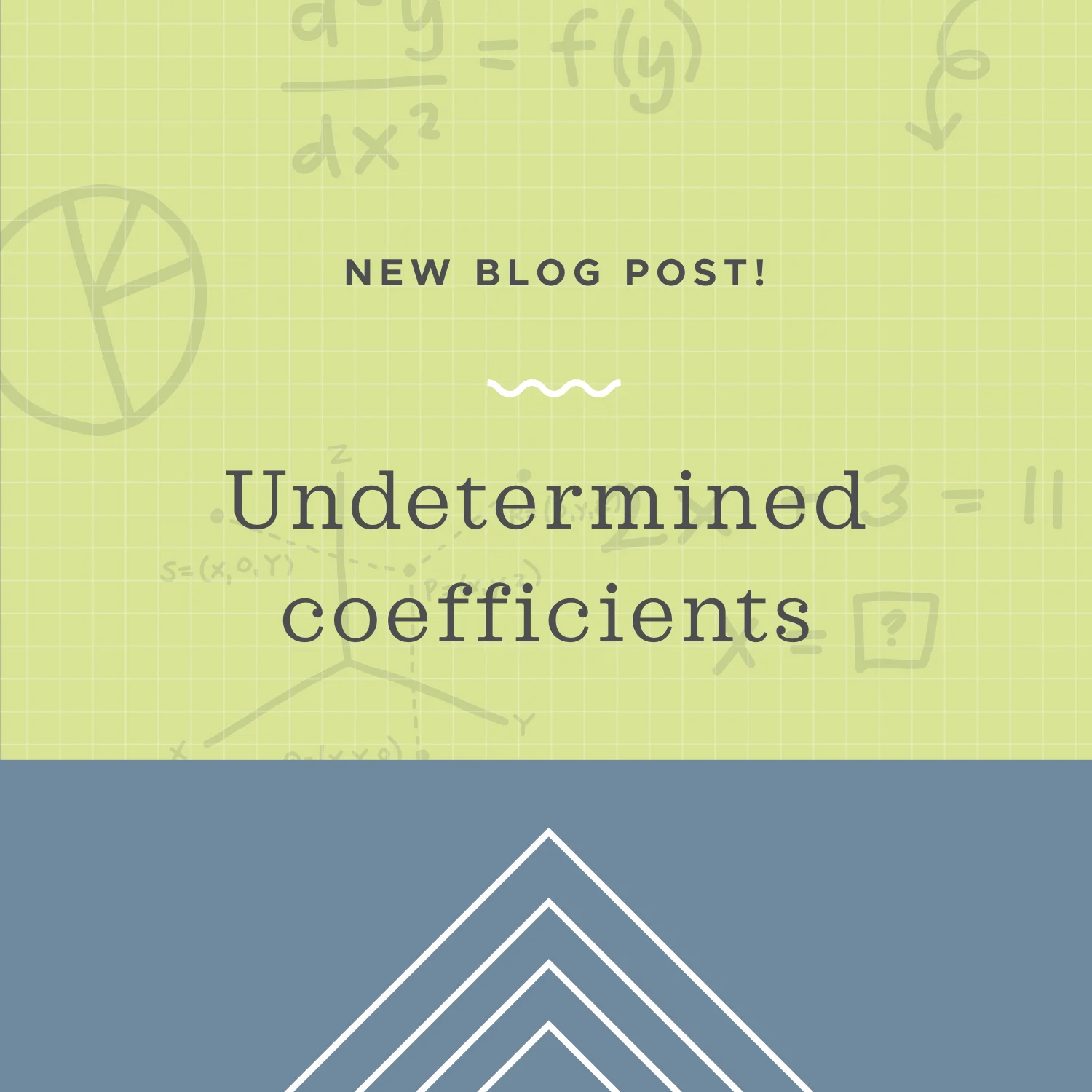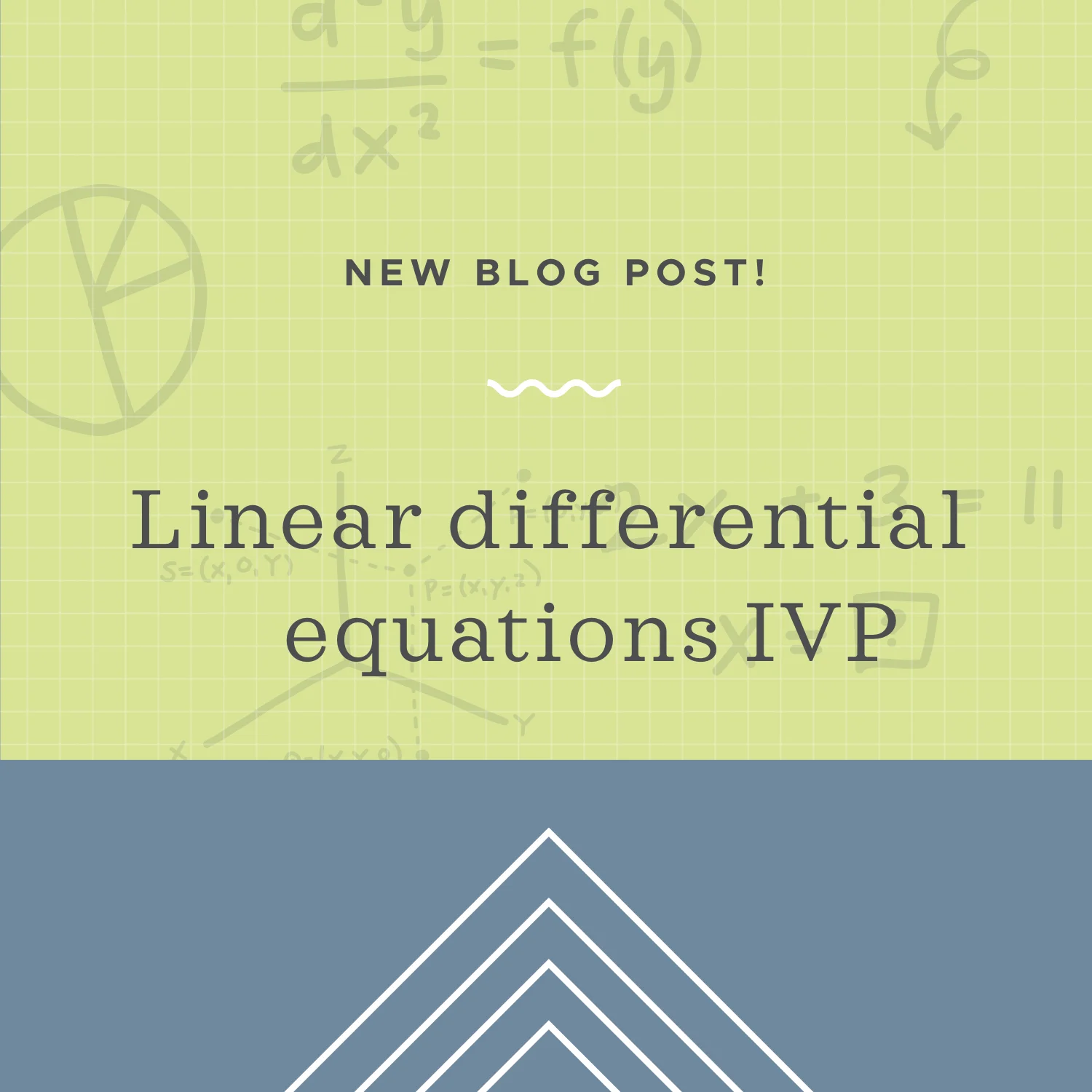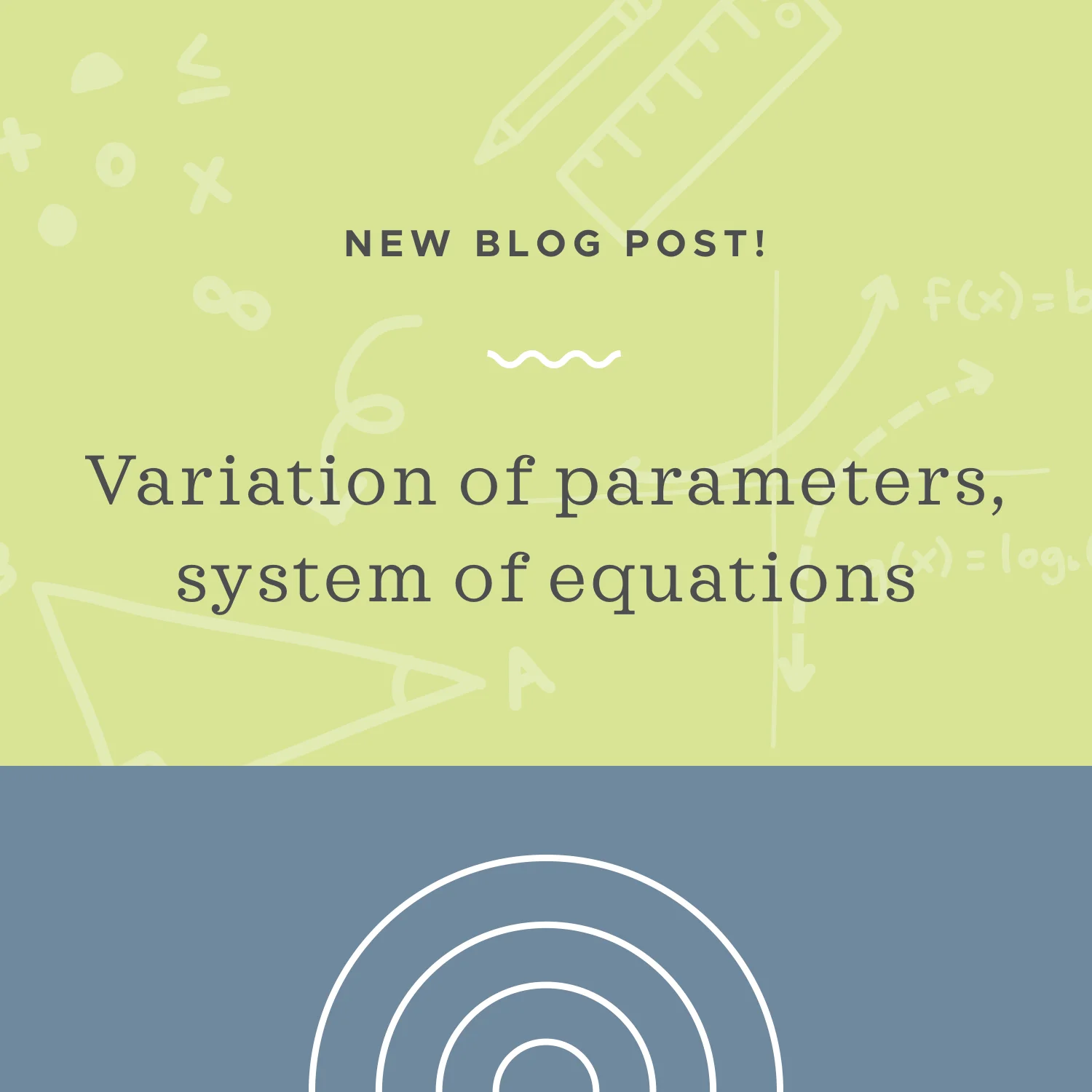We’ve seen how to use the method of undetermined coefficients and the method of variation of parameters to compute the general solution to a nonhomogeneous system of differential equations. We can also use the matrix exponential, e^(At), where A is an n x n matrix of constants, as part of the following formula for the solution to a nonhomogeneous system.
Read MoreWe saw that first order linear equations are differential equations in the form dy/dx+P(x)y=Q(x). In contrast, first order separable differential equations are equations in the form N(y)(dy/dx)=M(x) or N(y)y'=M(x). We call these “separable” equations because we can separate the variables onto opposite sides of the equation. In other words, we can put the x terms on the right and the y terms on the left, or vice versa, with no mixing.
Read MoreWe’ll learn much more about matrices in Linear Algebra. For now, we just need a brief introduction to matrices (for some, this may be a review from Precalculus), since we’ll be using them extensively to solve systems of differential equations.
Read MoreIf undetermined coefficients isn’t a viable method for solving a nonhomogeneous system of differential equations, we can always use the method of variation of parameters instead. Just like with undetermined coefficients, we have to start by finding the corresponding complementary solution, which is the general solution of the associated homogeneous equation.
Read MoreIn the last lesson about linear differential equations, all the general solutions we found contained a constant of integration, C. But we’re often interested in finding a value for C in order to generate a particular solution for the differential equation. This applies to linear differential equations, but also to any other form of differential equation. The information we’ll need in order to find C is an initial condition, which is the value of the solution at a specific point.
Read MoreThe method of undetermined coefficients may work well when the entries of the vector F are constants, polynomials, exponentials, sines and cosines, or some combination of these. Our guesses for the particular solution will be similar to the kinds of guesses we used to solve second order nonhomogeneous equations, except that we’ll use vectors instead of constants.
Read MoreTo investigate first order differential equations, we’ll start by looking at equations given in a few very specific forms. The first of these is a first order linear differential equation. First order linear differential equations are equations given in the form dy/dx+P(x)y=Q(x).
Read MoreConvolution integrals are particularly useful for finding the general solution to a second order differential equation in the form ay''+by'+cy=g(t). Notice in this equation that the forcing function g(t) is not defined explicitly. Without a convolution integral, we wouldn’t be able to find the solution to this kind of differential equation, even given initial conditions.
Read MoreNow we want to look at the phase portraits of systems with complex Eigenvalues. The equilibrium of a system with complex Eigenvalues that have no real part is a stable center around which the trajectories revolve, without ever getting closer to or further from equilibrium. The equilibrium of a system with complex Eigenvalues with a positive real part is an unstable spiral that repels all trajectories. The equilibrium of a system with complex Eigenvalues with a negative real part is an asymptotically stable spiral that attracts all trajectories.
Read MoreWhereas partial derivatives are indicated with the “partial symbol,” we never see this notation when we’re dealing with ordinary derivatives. That’s because an ordinary derivative is the derivative of a function in a single variable. Because there’s only one variable, there’s no need to indicate the partial derivative for one variable versus another.
Read MoreIn general, to solve the initial value problem, we’ll follow these steps: 1. Make sure the forcing function is being shifted correctly, and identify the function being shifted. 2. Apply a Laplace transform to each part of the differential equation, substituting initial conditions to simplify. 3. Solve for Y(s). 4. Apply an inverse transform to find y(t).
Read MoreIn order for a differential equation to be called an exact differential equation, it must be given in the form M(x,y)+N(x,y)(dy/dx)=0. To find the solution to an exact differential equation, we’ll 1) Verify that My=Nx to confirm the differential equation is exact, 2) Use Psi=int M(x,y) dx or Psi=int N(x,y) dy to find Psi(x,y), including a value for h(y) or h(x), and then 3) Set Psi(x,y)=c to get the implicit solution.
Read MoreWe already know how to solve an initial value problem for a second-order homogeneous differential equation. Boundary value problems are very similar, but differ in a few important ways: 1) Initial value problems will always have a solution; boundary value problems may not, 2) The initial conditions given in an initial value problem relate to the general solution and its derivative; the initial conditions in a boundary value problem both relate to the general solution, not its derivative, and 3) The initial conditions given in an initial value problem are both for values of x0=0; the initial conditions given in a boundary value problem are for x0=a and x0=b.
Read MoreUndetermined coefficients is a method you can use to find the general solution to a second-order (or higher-order) nonhomogeneous differential equation. Remember that homogenous differential equations have a 0 on the right side, where nonhomogeneous differential equations have a non-zero function on the right side.
Read MoreEuler’s Method helps you approximate solutions to differential equations. You’ll always be given an equation and an initial condition, and you’ll use this information to carry out the Euler’s approximation in multiple steps.
Read MoreTo solve an initial value problem for a second-order nonhomogeneous differential equation, we’ll follow a very specific set of steps. We first find the complementary solution, then the particular solution, putting them together to find the general solution. Then we differentiate the general solution, plug the given initial conditions into the general solution and its derivative to create a system of linear equations, and then use the initial conditions to solve that system for the constant coefficients. Finally, we’ll plug those constant coefficients back into the general solution.
Read MoreWe’ve already learned how to find the complementary solution of a second-order homogeneous differential equation, whether we have distinct real roots, equal real roots, or complex conjugate roots. Now we want to find the particular solution by using a set of initial conditions, along with the complementary solution, in order to find the particular solution.
Read MoreWe already know how to find the general solution to a linear differential equation. But this solution includes the ambiguous constant of integration C. If we want to find a specific value for C, and therefore a specific solution to the linear differential equation, then we’ll need an initial condition, like f(0)=a. Given this additional piece of information, we’ll be able to find a value for C and solve for the specific solution.
Read MoreLike the method of undetermined coefficients, variation of parameters is a method you can use to find the general solution to a second-order (or higher-order) nonhomogeneous differential equation. Remember that homogenous differential equations have a 0 on the right side, where nonhomogeneous differential equations have a non-zero function on the right side.
Read MoreWe already know how to separate variables in a separable differential equation in order to find a general solution to the differential equation. When we’re given a differential equation and an initial condition to go along with it, we’ll solve the differential equation the same way we would normally, by separating the variables and then integrating. The constant of integration C that’s left over from the integration is the value we’ll be able to solve for using the initial condition.
Read More





















